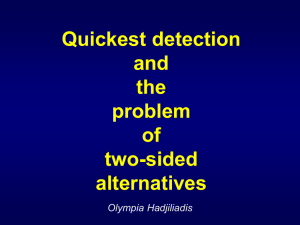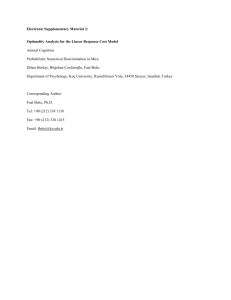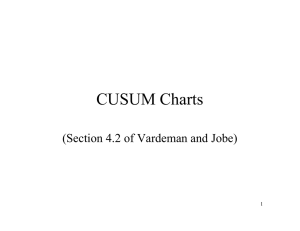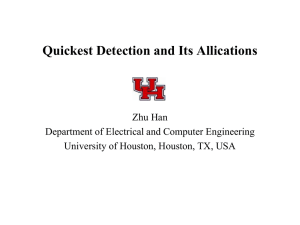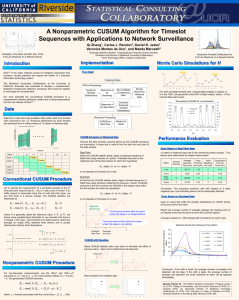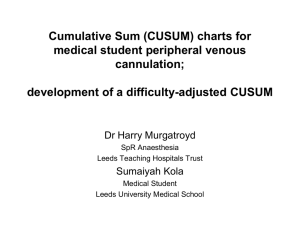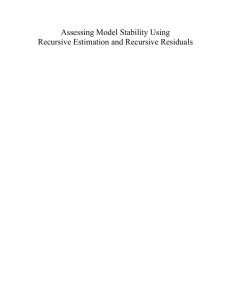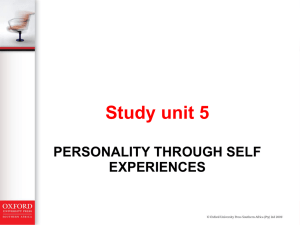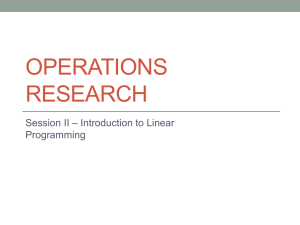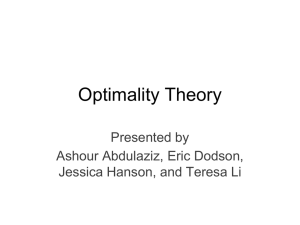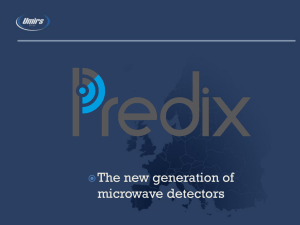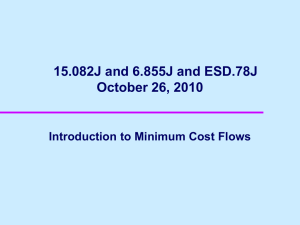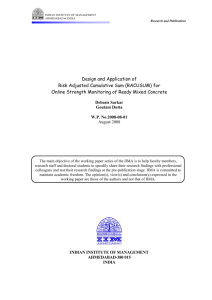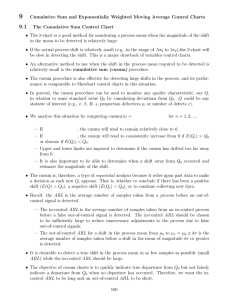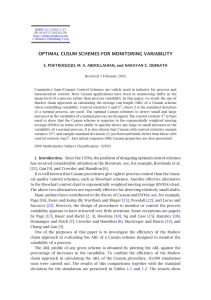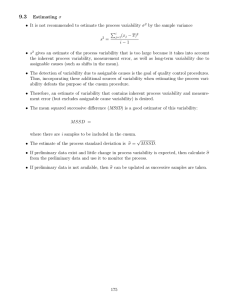Multi-dimensional quickest detection
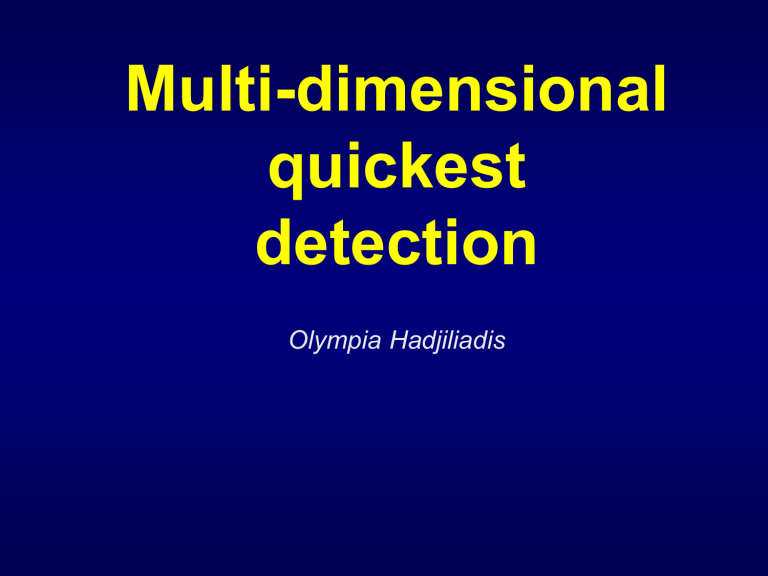
Multi-dimensional quickest detection
Olympia Hadjiliadis
Outline: Part I- One Shot Schemes
The multi-source quickest detection problem
The decentralized example &a synchronous communication through
CUSUM one shot schemes (& its optimality)
Multiple sources set-up of trade-off asap vs fa
Asymptotically there is no loss of information
In the decentralized/centralized set-up
(more mathematically….)
Asymptotic optimality of the N-CUSUM rule
Summary
The multi-source quickest detection
We sequentially observe through independent sources i=1,…,N
Information (if all at one location) with special attn to
ASSUMPTION
&
1) The onset of signal can take place at distinct times
2) :unknown constants
3)
OBJECTIVE : Detect the minimum of as soon as possible but controlling false alarms
Optimality of the CUSUM
Min-Max approach
Lorden’s criterion (1971) subject to
The Cumulative Sum ( CUSUM ) is optimal
Shiryaev(1996), Beibel(1996)
The decentralized system
Each sensor S i is sequentially observing continuous observations
S
1
T
1
S
2
T
2
S
3
T
3
T
N
S
N
Fusion center
CUSUM & its optimality
The CUSUM statistic process is
The CUSUM stopping rule is
… and is optimal in subject to
Asap Mean time to false alarm
d
Multiple sources set-up subject to
Define
The optimal stopping rule satisfies
Proof: Let N=2 and consider S be s.t.
Let U stop as S, when observing { ξ t
1 } instead of { ξ t
2 } & vice versa
Then and
Consider T stops as S when Heads and as U when Tails while
Multiple sources set-up
Natural candidate: N-CUSUM
Hence the best N-CUSUM
Which translates to (as γ→ ∞) satisfies
Asymptotic optimality as γ→∞
If where
If
If
Asymptotic optimality (equal strengths)
N=2, µ=1
Asymptotic optimality
(unequal strengths)
N=2, µ
1
=1, µ
2
=1.2
µ
1
Asymptotic optimality
(unequal strengths)
N=2, µ
1
=1, µ
2
=1.5
µ
1
Outline: Part II-Coupled systems
The multi-source quickest detection problem
Models of general dependencies
Objective: Detect the first instance of a signal;
Meaning:
Detect the min of N change points in Ito processes
Set-up the problem as a stochastic optimization w.r.t. a Kullback Leibler divergence
Asymptotic optimality of the N-CUSUM rule
Summary
The multi-source quickest detection
We sequentially observe through independent sources i=1,…,N
Information (if all at one location) with special attn to &
ASSUMPTION
1) The onset of signal can take place at distinct times
2) : unknown constants
OBJECTIVE : Detect the minimum of as soon as possible but controlling false alarms
Examples
A system with AR behavior in each component and additive feedback from other sources
Such a system with signals of different strengths in each sensor
CUSUM & its optimality N=1
The CUSUM statistic process is
The CUSUM stopping rule is is optimal in subject to
Asap
Mean time to false alarm
Multiple sources set-up d subject to
Define
The optimal stopping rule satisfies
Multiple sources set-up
Natural candidate: N-CUSUM
Since are the same across i…
ALL ABOVE ARE EQUAL
Therefore…
To solve this problem we need…
Take N=2. It is possible to show that satisfy
To solve this…
G is the probability that a particle placed at (x,y) will leave D after t.
Asymptotic optimality as γ→∞ where
NOTE
:
If
Non-symmetric signals
We sequentially observe through independent sources i=1,2
Suppose where subject to
Multiple sources set-up
Natural candidate: 2-CUSUM
In order to have an equalizer rule, or equivalently we need
If as
Non-symmetric signals
We sequentially observe through independent sources i=1,2
Suppose where subject to
Summary
Asymptotic optimality of the N-CUSUM rule in the case are the same across I
In the case of Brownian motions with const drift
MESSAGE:
If you want to detect the first instance of onset of a signal, let the sensors do the work!
(Lose almost nothing in efficiency)
Extensions to the case different in law across i
What if the noises across sources are correlated.
Thanks to all collaborators
H. Vincent Poor
Tobias Schaefer
Hongzhong Zhang
“One-shot schemes for decentralized quickest change detection”, O. Hadjiliadis, H.
Zhang and H. V. Poor,
IEEE Transactions on Information Theory 55(7)
2009.
“Quickest Detection in coupled systems”, O.
Hadjiliadis, T. Schaefer and H. V. Poor ,
Proceedings the 48th IEEE Conference on
Decisions and Control, (2009)
Submitted to the SIAM Journal on control and optimization (2010)
